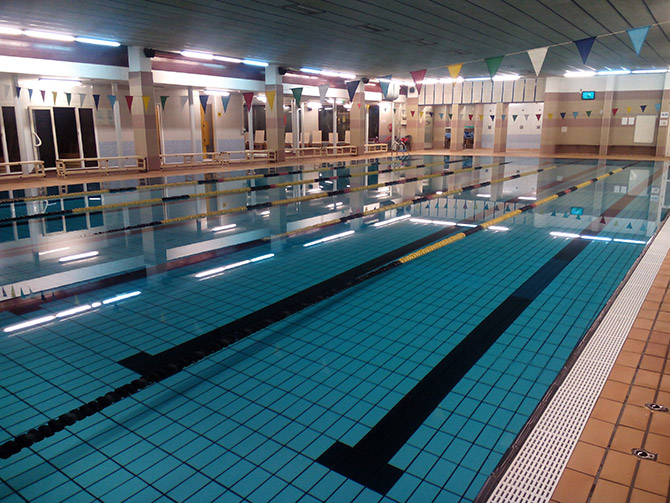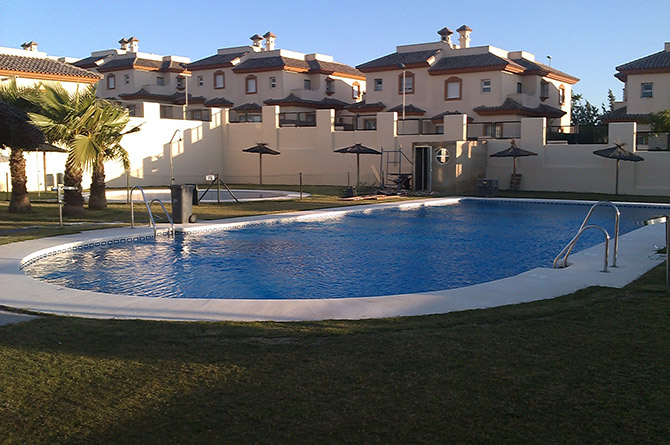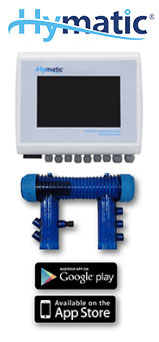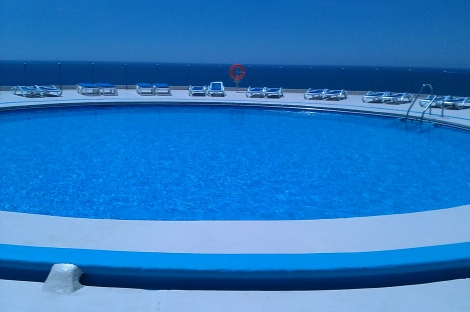Being well aware of the importance of reducing the operating costs of public swimming pools, hymatic decided to conduct a comparative study, both before and after installation of hymatic. For this study, they used the analyses performed by the independent laboratories contracted directly by the aquatic facilities.
The study was confined to three aquatic facilities open for use by the public: the indoor pool at a college with a 450m3 basin, around 100 bathers a day on average and water temperature of 30°C; a 250m3 open-air pool outside an urban development project, 150 users daily on average, and average summertime water temperature of 27°C; and lastly, an indoor municipal pool with a water volume of 400m3, with 400 bathers daily and water temperature of 30°C.
An hymatic purification system had been installed at each pool using ABOT (Advanced Bipolar hidation Technology) to provide complete and continuous water disinfection. The ecological ABOT technology breaks up water molecules by means of hydrolysis, producing one of the most powerful disinfectants on the market from the molecule itself, known as hydroxyl ion (OH¯). It is tremendously effective as a purifier, since it gives disinfecting power up to three times that of liquid chlorine or purification system using salt.

Savings at public swimming pools
According to this study, use of the hymatic system yields very tangible results, bringing benefits for management, users, the facilities and, needless to say, the environment.
Savings of chlorine
The analyses showed there were significant savings in chemical products, in the range of 50% to 80%, with an average of 75%. These cost reductions come about by disinfecting the pool, producing a high redox potential in the water. This means that, for a given system set-point of the chlorine-dosing system, less chlorine needs to be added in order to maintain a constant 0.5 mg/l. The saving of chemicals thus achieved is substantial, and reduces the amount of combined chlorine, also known as water chloramines. This is the substance that has effects on the water and affects the health of more sensitive bathers.
Savings in pH reducers
With hymatic ions, the pool is disinfected at a high redox potential. During the process of producing hydroxyl ions and their reactions in the water, the pH increases only very slightly compared with the rise in pH instability brought about by adding chlorine to the water. This means the water's chlorine content takes longer to decrease, and the pH level rises only very slightly. Consequently, the saving in costs incurred reducing the pH level is at least 50% compared with pools that are treated using only chlorine.
Savings in water replacement
By reducing the input of chlorine, less combined chlorine (chloramines) is formed, also less cyanuric acid and fewer chlorine by-products. In this way, we greatly reduce the amount of replacement water required each day in order to keep those levels below the norm.
Taking as an example the college's 450 m3 indoor pool, before installing Hymatic chlorine usage was 20 litres daily, whereas afterwards it was just 7 litres a day – a 13-litre saving. The other striking saving came in the amount of replacement with clean water, which at this pool was 5 m3 a day. After installing the system, a level of 1 m3 was achieved.

Conclusions
The total savings achievable through water disinfection using Oxymatic lie in the 60% to 80% range, depending on the volume and efficiency of the dosing system installed, but is on average 75%. In this way, we get a pool that is both natural and ecological, with crystal-clear water that is free of odours and gives improved bathing quality. With all chemical products reduced to a minimum, we prevent irritation to the skin or eyes without any of the problems brought about by allergies to chlorine or gases, and without discoloration of the hair, or the swimming suits.
The reduced chlorine input and lower pH reducers mean that plant and equipment is better protected. It has been proven that, with the Hymatic disinfection system, corrosion of pipes, metal components, stonework and marble ware is drastically reduced, and no vapours are produced that would oxidise coatings. All pools, including indoor pools, are protected, since 15% to 20% of calcium carbonate incrustations are prevented in hard, calcified water.
As far as return on investment of the system is concerned, it has been calculated from these data that the amortisation period is within the range of 9 months to 2 years. In the case of a 450 m3 indoor pool, it is 16 months.
In summary, Hymatic is a highly efficient and healthy system that reduces costs that requires little supervision of maintenance, and offers the user complete peace of mind. By installing this system at public pools, you will turn an expense into a profitable investment in the form of both cost savings and the welfare of bathers.



